Want Italy's best food? Head to its national parks
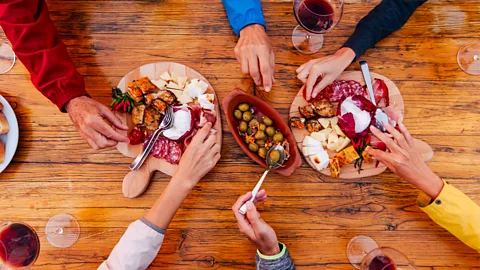 Getty images
Getty imagesWith so many famous cities and coasts to explore, most visitors to Italy never think to stop by its national parks, but these wild landscapes produce epic Italian culinary adventures.
Whenever we visit my husband's family in Calabria, at the tippy toe of Italy's boot, we invariably take the train; it beats the six-hour drive down an autostrada (motorway) full of lorries. But this time, we're taking the car since we'll be making a detour to a national park. For us, and for many Italians, that means one thing: we're bringing back food.
Italy has so many renowned cities and coastlines that most visitors never think to explore its parchi nazionali (national parks), let alone know that these wild areas are some of the best food destinations in a nation famous for its cuisine.
Italy has 26 national parks marching from its rugged Alpine spine in the north to its saw-toothed heel in the south, encompassing mountain ranges, waterfalls, centuries-old forests, picturesque villages and ghost towns. But within these biodiverse landscapes are also farms, generational vineyards and orchards. Hikers may pass herds of dairy cows, hogs and sheep and then wander past artisanal food stands and restaurants offering park-to-table dishes made with ingredients sourced directly from the surrounding land.
A nature lover's paradise? Certainly. An in the-know, Italians-only foodie secret? Absolutely.
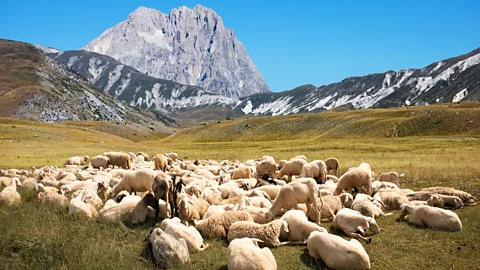 Getty Images
Getty ImagesNational parks – Italian style
It may come as a surprise that Italy's national parks produce some of the country's finest food. After all, in many places – such as the US – private farms are rare on protected land. But in Italy, where many national parks were created around ancient villages and centuries-old agricultural businesses, it's a different story.
If you're visiting Tuscany:
The River Arno flows through Florence and into the oasis of the Parco Nazionale delle Foreste Casentinesi. Climb Mount Penna or admire the Lago degli Idoli – a lake sacred to the ancient Etruscans – before devouring park bounty, including "fresh cheeses like raviggiolo or ricotta," says park president Claudia Mazzoli. "Casentino ham, chestnuts, berry jams and honey. The tortello nella lastra is dough made from flour and water, stuffed with boiled potatoes or pumpkin, then baked on a terracotta slab." Pick up fruit jams at the Le Sorgenti farm in Vetriceto. While in the village of Santa Sofia, sample raviggiolo at the Fattoria Trapoggio dairy and dine at La Fiaschetteria.
"In Italy, people and nature go hand in hand. They aren't two separate things. It's really a philosophical idea," says Paolo Iannicca, a tour guide based in the Parco Nazionale d’Abruzzo, Lazio e Molise. As a result, Italy's rich biodiversity combined with its ancient pastoral footprint have birthed an enormous variety of enogastronomic products – cultivated throughout the centuries and revered to this day.
Travelling to a national park to source the best ingredients may be the most Italian travel experience of all.
"It's in our DNA," says chef Maria Nasso, who frequently collaborates with the Parco Nazionale del Circeo's culinary initiatives. "Italians structure their days around food. Even the choice of accommodation when visiting a park during holidays – good food is always a constant."
That's why national park food experiences hit so hard for Italians. Though famous overseas for dishes like lasagna or pizza, within Italy, food culture is passionately tied to single ingredients and each village is often renowned for a locally cultivated product.
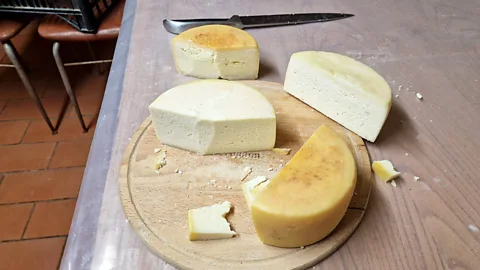 Parco Nazionale delle Foreste Casentinesi
Parco Nazionale delle Foreste CasentinesiYou may have heard of Parma ham and Marsala wine. Go deeper: the provola of Agerola; the artichokes of Sezze; the lentils of Pescasseroli. Italians may love pasta alla carbonara but we lose our minds over a strain of ancient wheat, gifting artisanal products to each other as though offering jewels to our liege. "I've been to the Dolomites," we'll say. "I bestow upon you the prized rhododendron honey."
If you're visiting Rome:
An hour outside Rome is the Parco Nazionale del Circeo on the Riviera of Ulysses – so named for its ties to Greek mythology. The park's products are also legendary; the kiwis of Latina, the pine nuts of Saubadia and the Pontine water buffaloes, whose milk is used to produce delicious dairy products. "Try the mozzarella, ricotta and the new buffalo milk Taleggio from the Perseo dairy," says Nasso. "Nearby is the farm La Favetta, where you can enjoy the sweet and petite favetta strawberry of Terracina." For a meal celebrating the park's products and wines, visit the Cantina Sant'Andrea and its agritourism, Seguire le Botti.
Italy's wild parks are the epicentre of chilometro zero (zero-kilometre) products, from cheese to meat to native vegetables. "For Italians, typical local products are non-negotiable," says Iannicca, who runs La Bottega di Gaia, an artisanal shop selling products from the Parco Nazionale d'Abruzzo, Lazio e Molise. "They want to eat authentic, typical food, and that's exactly what [parks] provide."
Teresa Maradei, founder of the farm Terrægusto in Calabria's Parco Nazionale del Pollino, echoes this sentiment: "In Italy, food is part of the emotional geography. Visiting a park to savour its flavours means living the landscape with all your senses. It's a uniquely Italian way of doing ecotourism."
So why are Italy's national parks – and their culinary riches – off many tourists' radars?
"Because Italy's tourism narrative abroad is still too focused on art cities and iconic destinations," says Maradei."Parks are seen only as natural reserves, not as places of food culture."
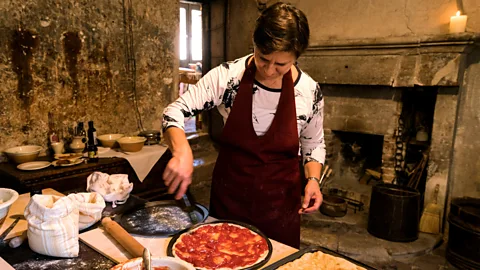 Getty Images
Getty ImagesBut with the rise of the Slow Food movement in the late 1980s, dining in national parks – which widely encourage organic, eco-sustainable farming practices – is becoming increasingly popular. "More and more, travellers seek slow, immersive and genuine experiences – not just eating, but seeing where the product is born, who cultivates it and how it's transformed," says Maradei.
Italian national park websites typically list the park's endemic products, restaurants, dairies and enogastronomic itineraries.
"[National parks are] what you might call a 'lesser known' Italy, but not a lesser Italy," says Iannicca. "Italy is a nation made up of thousands of small, scattered towns. If you only go to the usual places… you're missing the real Italy."
Hence, us in our car, ready to devour the bounty of Calabria.
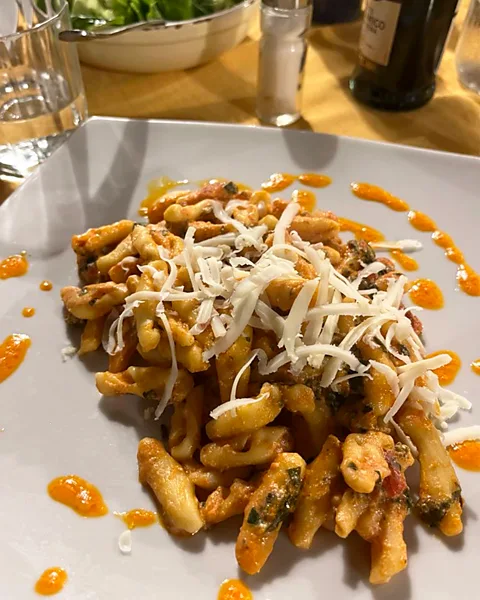 Eva Sandoval
Eva SandovalThe Parco Nazionale del Pollino
Stretching 193,000 hectares, the Parco Nazionale del Pollino is Italy's largest protected wilderness area. It straddles both the Calabria and Basilicata regions and is home to epic mountain climbing, Bosnian pine forests and the nucleus of Italy's Arbëreshë (Italo-Albanian) population – the descendants of Albanians who found refuge here in the late 15th and early 16th Centuries.
If you're visiting Venice:
An hour and a half north of Venice, the Unesco-listed Parco Nazionale Dolomiti Bellunesi stuns with its epic Alpine peaks and otherworldly pink sunsets – and its food is no less spectacular. "Traditional dishes include game and cheeses like schiz [fresh cheese cooked in butter and cream, eaten with polenta]," says Daniela Perco, founder of the Museo Etnografico Dolomiti. Cheese here is often paired with mountain honey, barley soup with zalet beans and casunziei (ravioli with seasonal vegetable-based fillings like pumpkin or potatoes). For dessert: strudels and fruit tarts. Stop at a traditional wooden rifugio (mountain chalet) like Rifugio San Sebastiano in Goima to feast on park specialties or visit Azienda Agricola La Sloda in the Zoldo Valley for honey and the Latteria di Camolino in Sospirolo for mountain cheeses.
Among its famed products are the fagiolo poverello bianco (white beans) of Mormanno, the white onions of Castrovillari, the caciocavallo cheese of Sila and the peppers of Senesi.
After our six-hour drive, we base ourselves in the village of Mormanno and visit the Neolithic ruins of Frascineto – believed by some locals to be an ancient solstice clock. At a trattoria, we refuel with an antipasto platter heaped with park-produced prosciutto and polenta draped with melted caciocavallo cheese.
The next day, we hike through massive Bosnian pine groves over carpets of wildflowers, passing mooing herds of Podolica cows. But the highlight comes in the town of Civita, with an Arbëreshë meal at Ristorante Kamastra. First we are served a selection of pickles made from Castrovillari onions, fava beans and oily hunks of cubed prosciutto. Then there is cavatelli con ricotta e nenesa (cavatelli pasta with ricotta and local nettles) followed by cinghiale alla bracconeria (boar in a savoury sauce). The standout is the krustul, an Arbëreshë dessert made of fried dough, cinnamon and Pollino honey.
If you're visiting the Amalfi Coast:
Take a sharp detour 100km south into to the wilds of the Parco Nazionale del Cilento, Vallo di Diano e Alburni. Not only does this park offer thrilling spelunking and marvellous medieval monasteries, but its endemic grains, vegetables, cheeses and olive oils inspired the Mediterranean diet. La Pertosa, an agritourism near the Neolithic Pertosa-Auletta caves, serves dishes made with park-grown vegetables and cheeses made using milk from their own animals. Don't miss the park's famous heart-healthy olive oil, says Edmondo Soffritti, who runs the farm with his sisters, Simona and Luigia.
Before leaving the park, we stop at the Catasta Pollino museum and culinary outpost and buy:
One sack white beans of Mormanno
One sack lentils of Mormanno
One box park-grown almonds and figs covered in chocolate
One fat round of caprino cheese
One bottle Timpa delle Fave white wine
One bottle Gëzuar Magliocco red wine
Back home, we soak the beans overnight then sauté them in tomatoes, peperoncino and garlic to make a stew, which we serve alongside hunks of the cheese and bread torn impatiently from the loaf. The prized beans are small, tender and flavourful, like pearls of butter on our tongues.
"Because every ingredient tells a story – of a family, a landscape, a season," says Maradei. "Italians cook the land itself, and endemic ingredients are markers of belonging. It's not just about taste – it's about recognising oneself in a shared past."
--
If you liked this story, sign up for The Essential List newsletter – a handpicked selection of features, videos and can't-miss news, delivered to your inbox twice a week.
